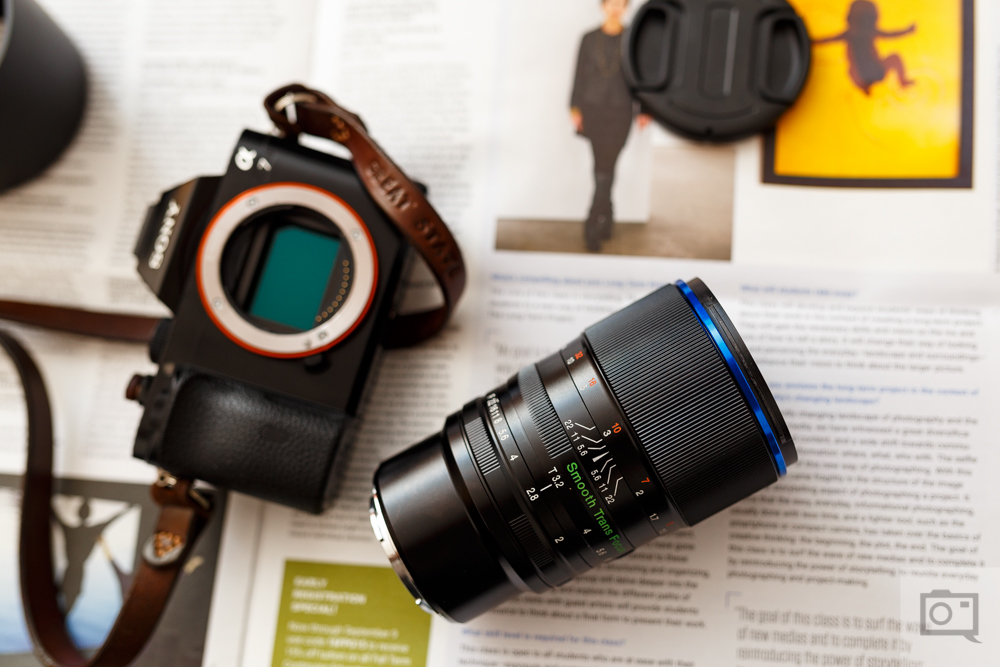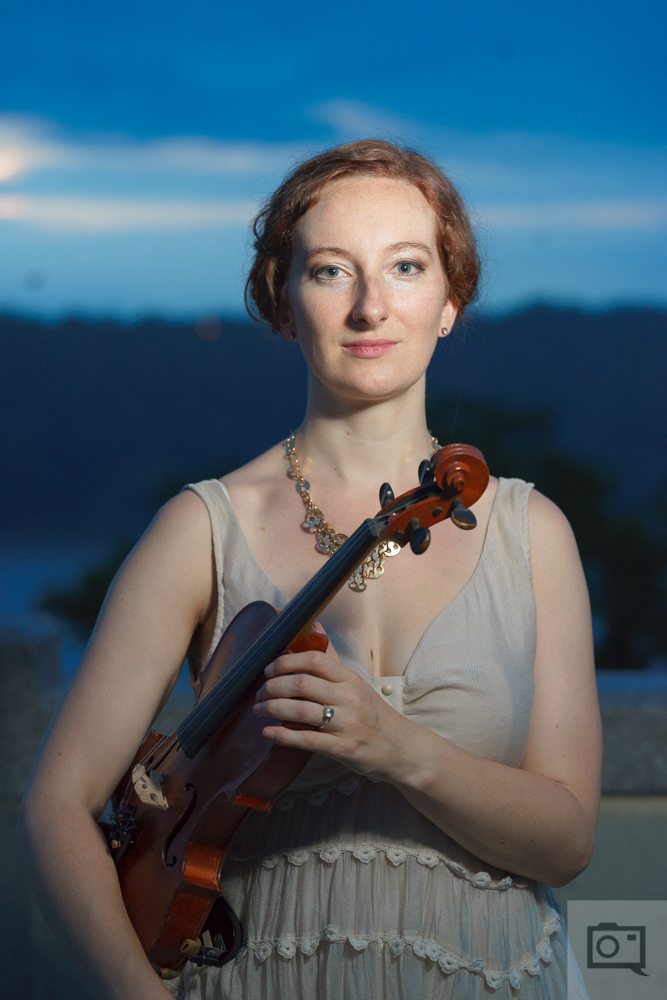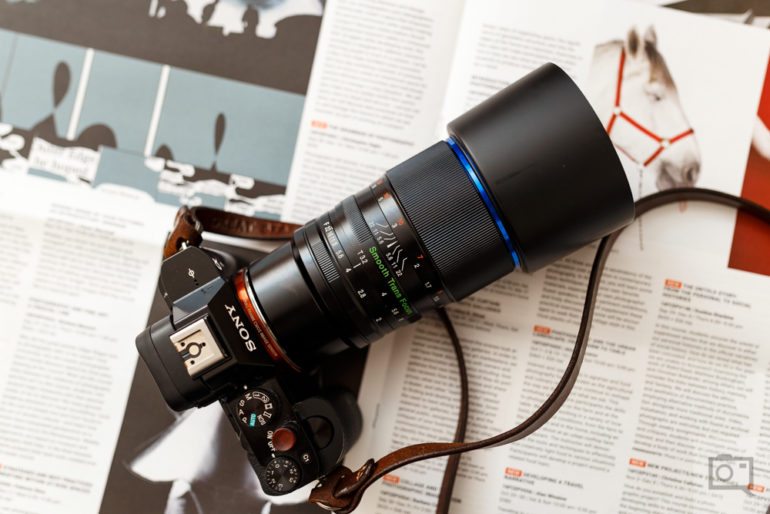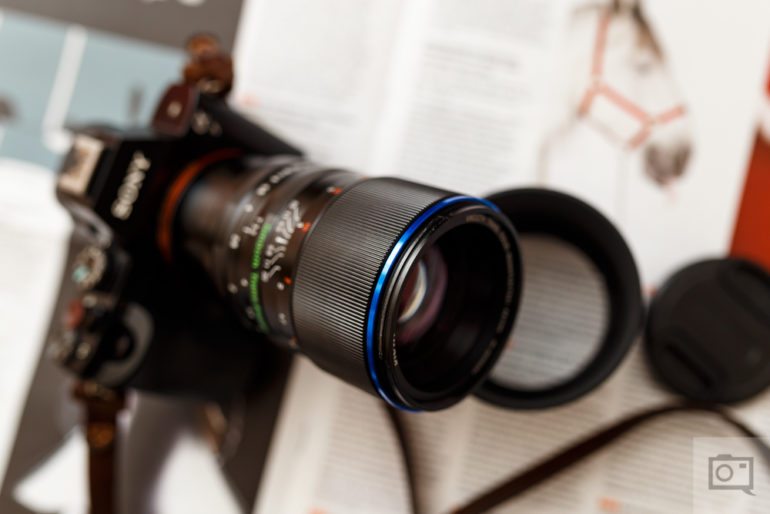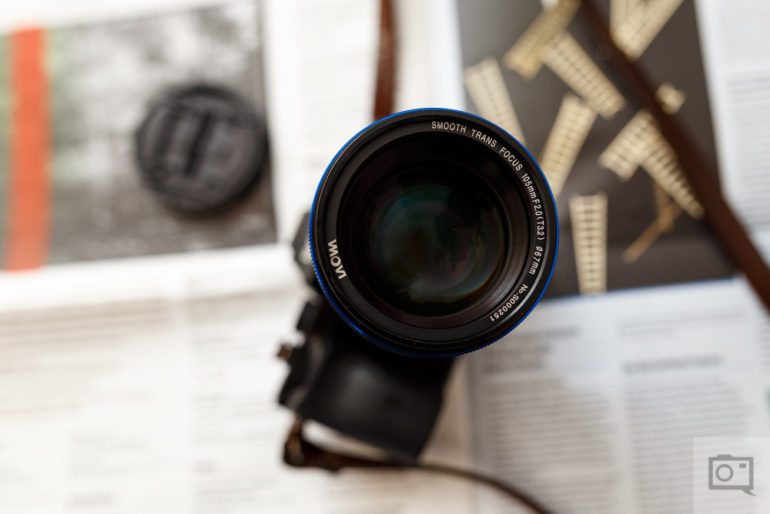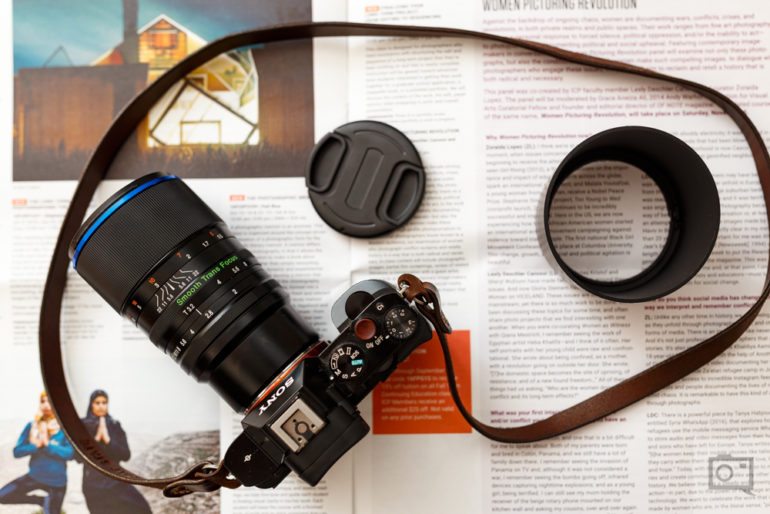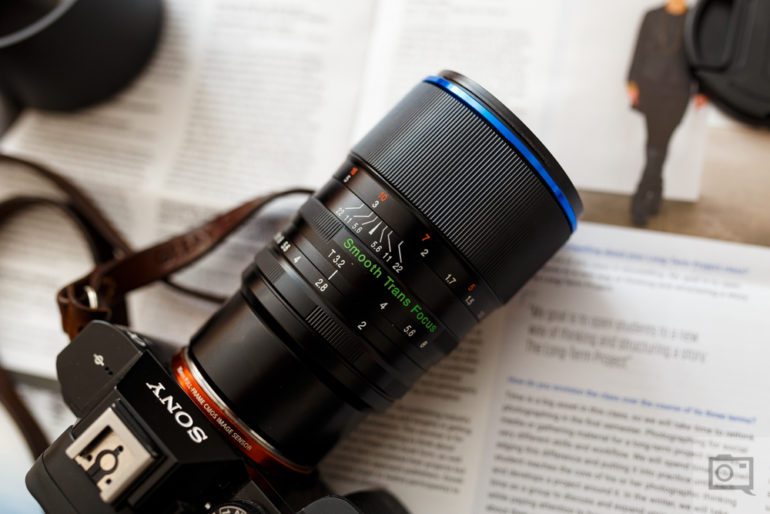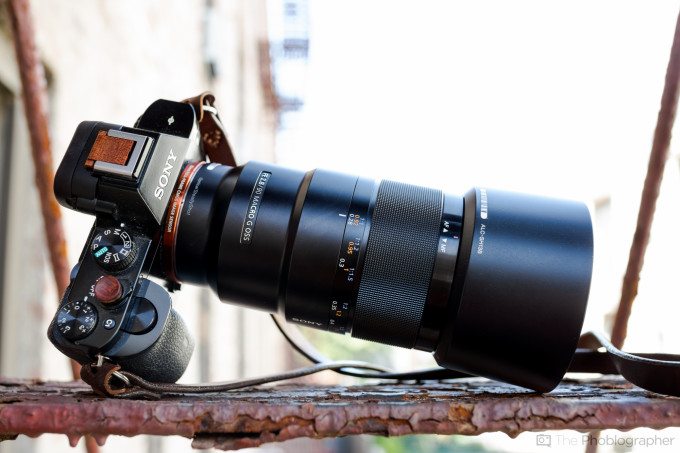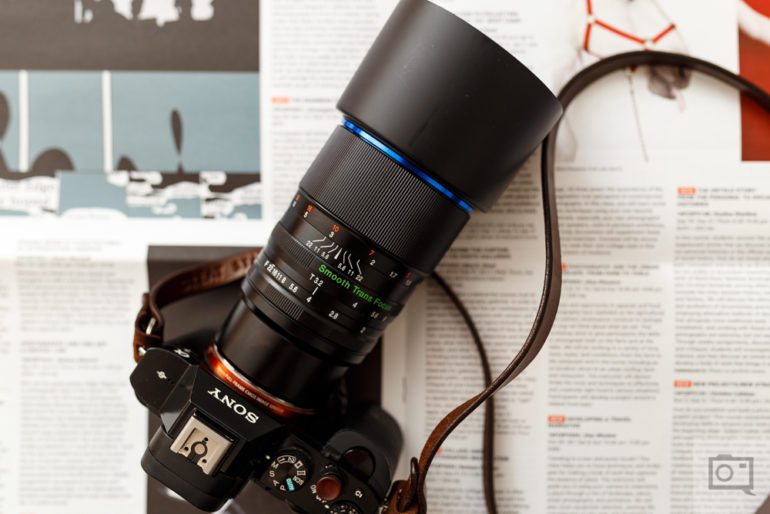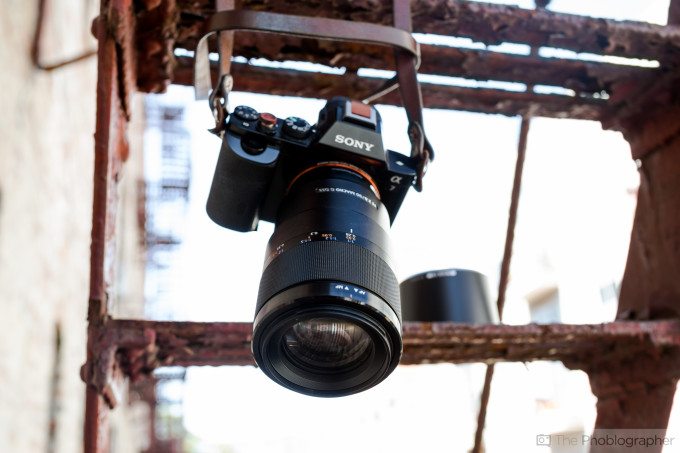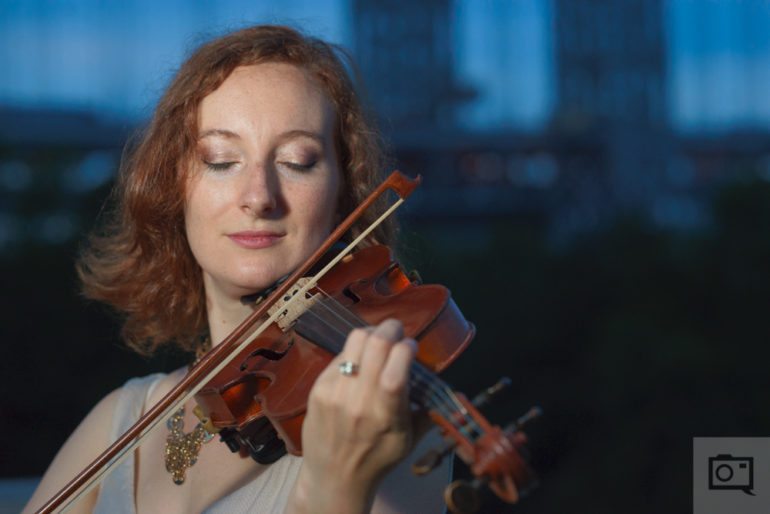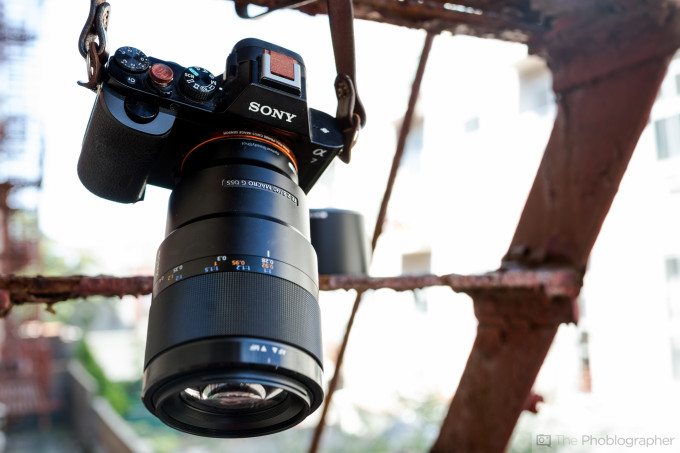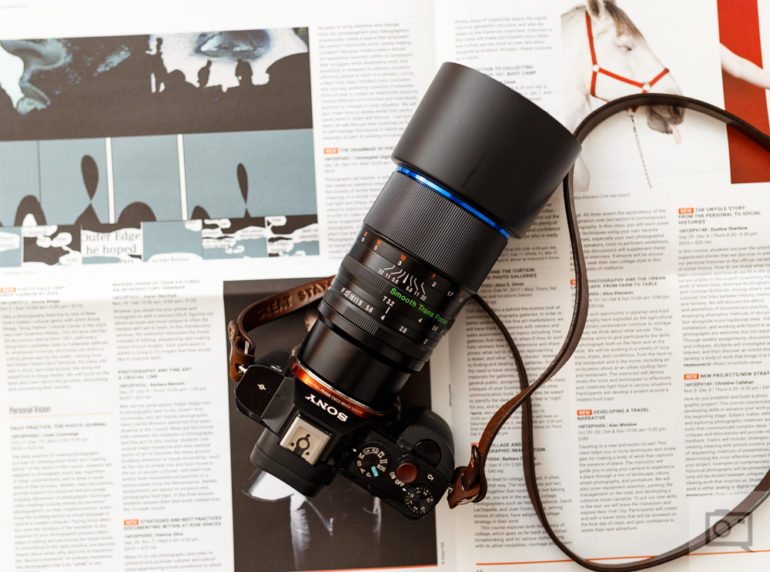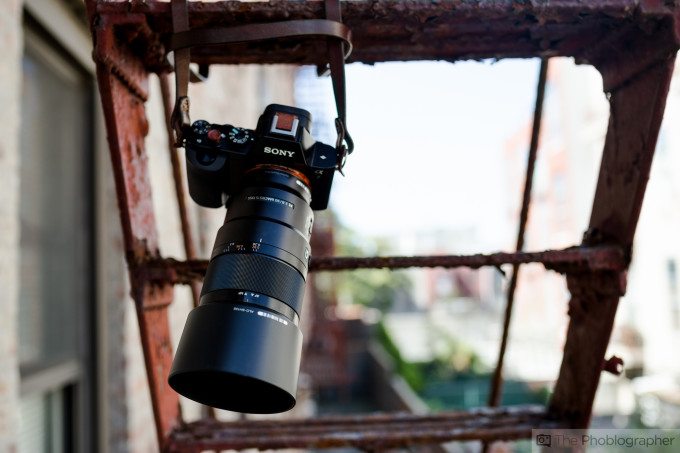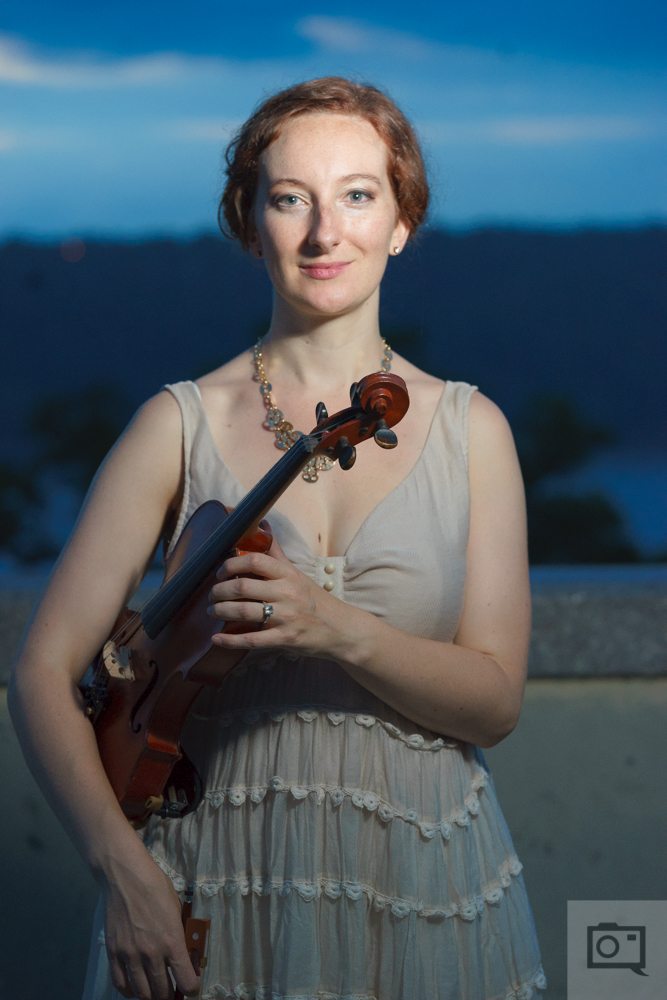When you look at the landscape of portrait lenses available for the full frame Sony E mount, you’ll see that they’re growing at a high rate–and the Venus Optics Laowa 105mm f2 lens is only one of those options. This lens is very special due to the design incorporating an apodization element to produce images that the company claims will give you “smooth and creamy bokeh while maintaining excellent sharpness at the focal plane.” To that end, it loses some light gathering abilities and has a T rating of T3.2–meaning that the photographer loses more than a full stop of light.
In practice, you indeed do get incredible images. But as with every manual focus telephoto lens, you’ll need to be very careful.
Pros and Cons
Pros
- Incredible colors
- Fantastic sharpness when in focus and using a flash
- Great for skin tones
- Excellent build quality overall
- Feels great in the hand
Cons
- Considering that this isn’t an electronically connected lens, I’ve got no major issues overall.
Gear Used
We tested the Laowa 105mm f2 with the Sony a7r II and Sony a7 along with Godox flashes.
Tech Specs
Specs taken from the product page
| Lens descriptions | STF 105mm F2.0 (T3.2) |
| Focal Length | 105mm |
| Maximum Aperture (Fno) | F/2.0 |
| Maximum Aperture (Tno) | T/3.2 |
| Angle of view | 23°16″ |
| Elements/ Groups | 11/8 |
| Aperture Blades | F-stop: 8 T-stop: 14 |
| Minimum Aperture | F/22 |
| Minimum Focus distance | 0.9m |
| Maximum Reproduction Ratio | 0.16x |
| Focusing | Manual Focus |
| Filter Thread | Φ67 |
| Dimensions(DxL) | Φ76×98.9mm |
| Weight | 745g |
| Mounts | Canon EF / Nikon AI / Sony FE / Sony A / Pentax K |
Ergonomics
The Venus Optics Laowa 105mm f2 lens is one that shows its attention to complication and detail even in its ergonomics. This lens has three rings: one big one for focusing, one for T-stops and one for F-Stops. In between the focusing and apertures, you’ll see the depth of field scale.
Already a long telephoto lens, this lens has a lens hood that is probably around 1/3rd of the size of the lens’ overall length. At the front is a big, bright, blue ring.
If you choose to slap an ND filter on the front, you’ll need one that’s 67mm in size. The front element area of the lens indicates this.
When the hood is removed, we get to focus (no pun intended) on the major business side of this lens. It looks a lot like many 90mm f2.8 lenses though there yet it is a longer and faster focal length (sort of).
What you should also note is that the apertures are different. There is an aperture for the T stops and a separate one for the F stops. They both move in opposite directions to make it easier for use.
In Comparison
The closest lens that you can really compare this to is the Sony 90mm f2.8 lens for the E mount. That lens has much less going on, but it isn’t able to shoot in T-stop ratings. It’s also overall much smoother and I may even give the better gripping quality to the Venus Optics lens.
Rating
This lens gets five stars when it comes to ergonomics for the reason that it just feels so great in the hand, is lightweight and is built very well despite all the complicated things that Venus Optics is trying to do here.
Build Quality
In the hand, this offering from Venus Optics feels very solid. It has metal on the outside and both apertures work very well. The F Stops have nice, solid clicks while the T Stops are smooth as can be. One thing that you may want to ask for is weather sealing though–or image stabilization. As it is though, no manual focusing lens has IS built in, so I can only really ask for so much.
In Comparison
The Sony 90mm f2.8 is weather sealed, has optical stabilization, but doesn’t allow your hand to have as much gripping power as the Laowa does. Additionally, it also doesn’t allow you to have T-stop ratings. I like both lenses, but I’ve got to give the build quality advantage to Sony here.
Rating
The Venus Optics Laowa 105mm f2 feels great in the hand and is overall built very well. But it could surely be done better. With that said, even I’m debating this one. Their sample images are all done outside, but I want to argue that this is a lens highly designed for studio use.
Focusing
The offering from Venus Optics is focused manually. You’ll need to move the focusing ring left or right to ensure that you’ve got your subject in focus. Manually focusing makes you pay more attention to the image that you’re about to create and makes you put full intent into it. You’ll end up shooting less because of it–though every image you take will be that much better because of your extra effort.
When shooting handheld, you’re bound to not get something in focus when pixel peeping. But if you’re looking at the image as a whole, no one will care.
In Comparison
This one is apples to oranges. Some folks like autofocusing–and due to my legal blindness I have to say that I NEED it. However, I genuinely apprecaite manually focusing more, enlarging an area and ensuring that my lens is sharply and accurately focusing on an area.
Use the Venus Optics lens in the studio or with a tripod for extra stability. The Sony 90mm on the other hand can go anywhere.
Rating
You’re bound to get a shot out of focus due to your own faults. But that isn’t the end of the world.
Ease of Use
Using the Venus Optics lens is very different than other lenses. You’ve got two different apertures: so when you’re working with the F Stop, you’ll need to ensure that you don’t hit the TStop. That’s simple enough honestly.
Also as you twist the focusing ring, you’re bound to throw the focusing off due to the law of physics. So you’ll need to focus, adjust, adjust, shoot. It’s a more deliberate process, but it’s nice overall if you like being careful about your work.
In Comparison
The Sony 90mm f2.8 OSS will automatically focus on your subject, and you may prefer its ease of use for that reason.
Rating
The Venus Optics lens isn’t easy to use for the amateur, but we instead will target it to the higher end professional or the film shooter. If you’re that person, then this will be simple. Otherwise, you’ll need to adjust.
Image Quality
I’ve got the firm belief that no manufacturer these days is making an intentionally bad lens. Just think about it: no one sits there and says “I’ve got an idea for a shitty product that will make us lots of money.”
With the exception of Sharknado, this just doesn’t happen anymore in industries overall. In relation to lenses, they’re all good–and the Venus Optics Laowa 105mm f2 is no exception. It’s got incredible color, great bokeh, enough contrast to make your subject really stand out from the rest of the scene, and I didn’t find a single major problem here that wouldn’t make me want to buy this lens for studio work.
In fact, if you’re a studio headshot photographer, you need this lens.
Bokeh
Quite obviously, the closer you are to a subject, the better the bokeh will be. A lens like this is honestly designed for portraiture, so you’re going to get fantastic bokeh no matter what. Wide open at f2 ti’s very nice and even when stopped down a bit to somewhere along the lines of f5.6, you’re still getting great output from this lens.
That extra element really does help.
Color Rendition
With Sony cameras, you’ll want to use the Portrait color rendition profile. This will give you the overall best skin tones. Of course though, those can be manipulated due to using RAW files. They’re very nice overall and you can get anything ranging from Kodak Ektar to Portra when it comes to skin tones with this lens.
Chromatic Aberration
We didn’t really find anything right out of the camera. Rest easy.
Sharpness
When you manage to get the lens perfectly in focus on your subject, you’re going to find that the sharpness is rather incredible. As always, the best sharpness comes when you use a flash with the scene and your subject due to the way specular highlights work.
Extra Image Samples
In Comparison

The Sony 90mm f2.8 OSS tends to be a bit more saturated with skin tones than the Venus Optics option. For that reason, I’d actually lean more towards the Venus Optics lens not only for its superior bokeh, but the fact that I’m bound to do post-production to the image anyway. It’s more affordable and I get fantastic image quality from it.
Rating
This has to be the Laowa 105mm f2’s strongest feature. It’s well deserving of the five stars that it gets.
Conclusions
Likes
- Some of the best color for portrait lenses that you’re going to get on the market.
- Gorgeous bokeh
- Very sharp image quality
Dislikes
- The best results come when you’re using a tripod and both you and your camera are very stable. Or if you’ve got one of the cameras with image stabilization built in.
The Venus Optics Laowa 105mm f2 lens has some incredible strengths. You’re getting arguably the best image quality for the price–though you can also make strong cases for Sony’s 85mm f1.4 G Master with its 11 aperture blades. The extra element in the Laowa though shows us some innovation, as does the use of two different aperture blade systems. For shooting portraits, it ranks up there with the Zeiss 135mm f2, 85mm f1.4 G Master, Tamron 85mm f1.8 Di VC USD and the Sigma 85mm f1.4 as some of my favorites.
This image quality comes at a price though as you’ll need to really work for it. It’s manual focus only, it’s best used with a tripod, and you’ll need to be careful if you’re shooting handheld because of the physics of telephoto lenses.
If and when you manage to get those “keeper shots” you’ll be rewarded with an amazing image overall. I genuinely digg this lens, and the more advanced photographer will absolutely adore it.
The Venus Optics Laowa 105mm f2 lens earns four out of five stars, but also note that it’s amongst our favorite portrait lenses to shoot with thus far. Want one? Check Amazon for the latest prices.


